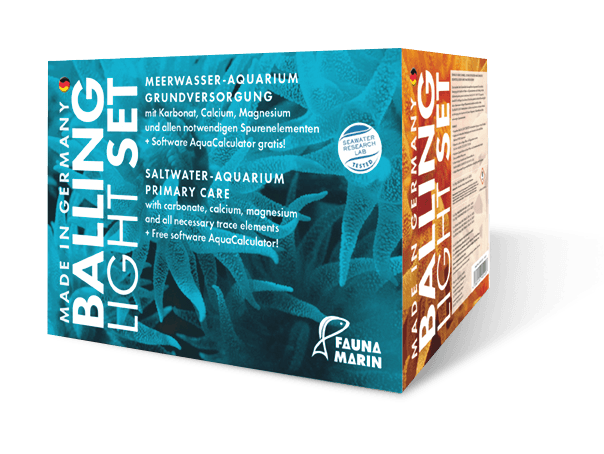Copper
Copper is an essential element which in its free form is toxic, even in small quantities. Natural seawater has values of up to 3 µg/l (0,26 US.liq.gal.). In the aquarium, however, it is usually complexed and attached to surfaces, so that it is not bioavailable and therefore less toxic than is usually assumed.
Copper can be introduced into the aquarium via tap water, trace element solutions and fish food. Some products contain higher amounts of copper to achieve a brightening of the corals. Copper readings as low as 10 µg/l (0,26 US.liq.gal.) can be considered uncritical, as most copper is present in the aquarium as a non-bioavailable compound.
What’s this:
Copper is an important and essential trace element that is irreplaceable in numerous physiological processes and is therefore needed.
Problems:
Too high copper levels from about 20 µg/l(0,26 US.liq.gal.) can cause partial death of corals. This starts with significant brightening of Acropora (later Seriatopora, Pocillopora, and Montipora) and soft corals. First molluscs like bivalves and snails as well as shrimps die. Typically you will see a slow increase before the symptoms get dramatic at some point.
Measures:
Filtering through iron and aluminum adsorbers, partial water changes and removal of the source.
Indicator species:
Depending on the composition of the Dynamic Elements, the effect of too high a concentration of copper varies. First signs are dulling of coloration, loss of zooxanthellae, brightening of tissue and death of giant clams. When detecting copper, always pay attention to the reference values and the Dynamic Elements graphic.
Value too high:
Partial water change, removal of decoration, filtration via Powerphos Phos 0.04, zeolite and activated carbon, reduction of supplementation.
Value too low:
Dosing via Elementals Trace Cu.
| Copper | Dynamic Element |
|---|---|
| Variety | Heavy metal |
| Reference value | 2–5 µg/l (0,26 US.liq.gal.) |
| Skill Level | Red, only for experienced aquarists |
| Source | salt mix, supply systems, trace element mixtures, animal feed, untested salts |
| Available | Elementals Cu, Balling-Light-System, Organic, Color Elements |
| Importance 1–6 | 6 |
| Detection quality | safe |

Balling Light:
In the Balling-Light system, copper is supplied via solution Trace 2. The dosing quantity is limited to the amount necessary for biofilms and corals and therefore usually not detectable. We have included the entry for feed and other added products here. Copper is found, for example, in fish and coral feed or algae products in higher quantities.
Copper is one of the elements that we consider as Dynamic Elements. These elements are directly related and are most important for the development of the reef aquarium. Whether copper is toxic depends, among other things, on the ratio of the copper concentration to the other elements. These include zinc, vanadium, nickel and molybdenum. If all values are in a favourable ratio to each other, copper values up to 20 µg/l (0,26 US.liq.gal.) are harmless. However, if copper is present in this concentration alone, damage to corals can be quickly detected. Pay attention to the graphic for the dynamic elements in your analysis and adjust the values accordingly.
The effect and consumption of trace elements is also related to the concentration of organic compounds in the aquarium. Copper occurs in many different compounds in the aquarium, some of which are deposited in biofilms or the surfaces of the decoration. Copper as well as other trace elements are stored in the aquarium in deposits and, if necessary, released again.
Copper poisoning is usually quite easy to detect, as the order of the damaged corals is always the same. In nature, the available trace element quantities are higher, as they accumulate in planktonic organisms and other prey, and they enter the corals via the food. Therefore regular feeding of the corals is important. Fauna Marin feeds contain these trace elements in a natural way and are immediately available to the corals.
Copper is very important for a healthy reef tank, and a few micrograms per liter are normal and desired. Only experienced aquarists should add copper directly to the food. In our supply systems copper is already contained in the products in sufficient quantities.
Tip:
The term copper seems to be emotionally charged in seawater aquaristics. This is certainly related to the excessive use of copper for treating coral fish in the 1960s and the toxicity of copper residues for invertebrates in marine aquariums at that time. However, copper is one of the most important trace elements because it is an indispensable key element in numerous enzyme systems. Pay attention to our chart of dynamic elements. There you can see how copper relates to other elements and what effects it has.